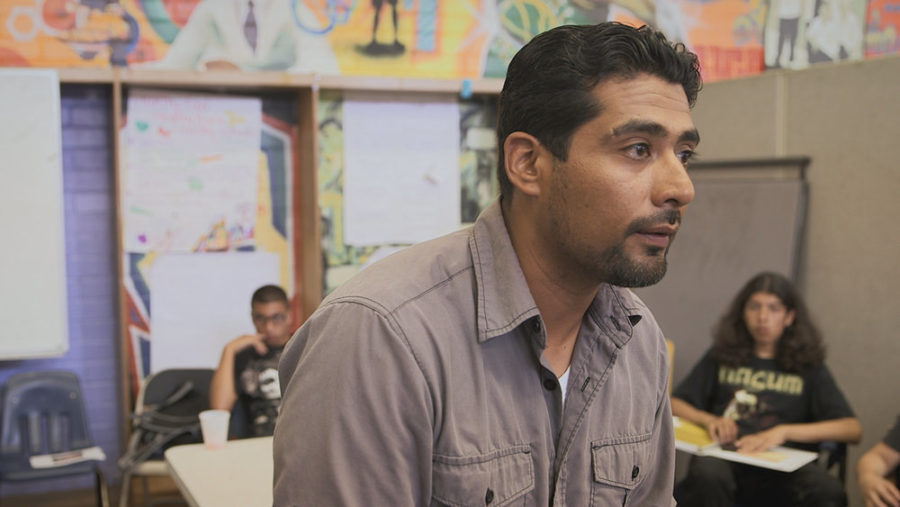Santa Rosa Junior College honored Black History Month by embracing intersectionality Wednesday at the Girvin Student Activity Center for a screening of “The Pushouts,” a documentary flipping the narrative around Latino children who don’t finish high school.
Rather than label these students “dropouts,” or kids who flunk out of school, the film encourages viewers to see them as “pushouts,” as kids who were let down and then pushed out of the education system by a broken society.
According to Victor Rios, the film’s main character, “By saying ‘dropout,’ you’re putting the blame on the individual. ‘Pushout’ says, ‘Wait a minute, system, what’s going on here? What are we doing as a system to address this issue?’”
Rios is an Oakland native who, by age 15, dropped out of high school, joined a gang and racked up three felony convictions. Rios now has a doctorate of sociology from the University of California, Berkeley, and is a tenured professor at UC Santa Barbara where he lectures on the intersection of society, marginalization, education and resilience.
“The Pushouts” follows Rios as he helps lead a mentorship program in South Los Angeles at the request of his own childhood mentor. The program’s goal is to help 16 to 24-year-old “pushouts” face childhood trauma, build confidence, develop coping strategies and earn their high school diploma.
“My dad, he got shot, and I think that’s the reason why I messed up my grades so much,” 19-year-old participant Rynisha said. “I couldn’t do nothing but just stress over it. And they kicked me out of school because my grades were too low.”
Many children and young adults in her situation accept this fate, including Rios himself at one point.
“When I was this little,” he said, miming the height of a child “I told myself, man, school is not for me. Why do I want to go to school if it’s not helping my mom pay the bills?”
But as he realized later, “What kind of job does an 8th grade dropout get?”
According to the film, 1 in 3 black and Latino children in America won’t graduate high school, and of those kids, two-thirds will end up in the criminal justice system.
In one of the film’s most poignant scenes, a teacher named Ms. Russ presents to a roundtable of school administrators.
“I realize that there’s a lot of kids, they have potential,” she said, “but it has not come to the forefront.”
A male administrator seated to her right asks with a smirk, “Potential for what?”
Ms. Russ pauses and draws a visible inhale, causing others at the table to chuckle. She turns to him and says, “Potential to graduate. Potential for further education, most of them.”
Her conviction, and the conviction Rios and the other mentors exhibit throughout the film, is what creates a space for the “pushouts” to succeed.
In addition to Rynisha, the film followed Dulce, 21, whose father was shot and killed in Mexico; photos of his body ran in the newspaper the next day. Another participant, William, 19, uses a few currently-incarcerated friends as motivation to graduate.
“I see how they suffer and they struggle,” he said. “I don’t want that for me.”
“The Pushouts” is clear in that these students will only succeed if the system changes to reflect an understanding of the challenges they face while offering patience, kindness and instruction that speaks to them in a relatable way.
Co-Director Dawn Valadez hopes her film will spur that change.
She and Director Katie Galloway plan to include “The Pushouts” in a new curriculum to enlighten educators, administrators, counselors and judges on the paradigm shift from “dropout” to “pushout.”
“We really feel the film is inspiring, and it’s very beneficial for it to get pushed to other places,” Valadez said. She and Galloway plan to launch a Seed&Spark campaign to crowdsource funding for the lessons.
SRJC now owns a license to “The Pushouts”; the film can be borrowed from Mahoney and Doyle for personal viewing.
Runtime: 56 minutes.



